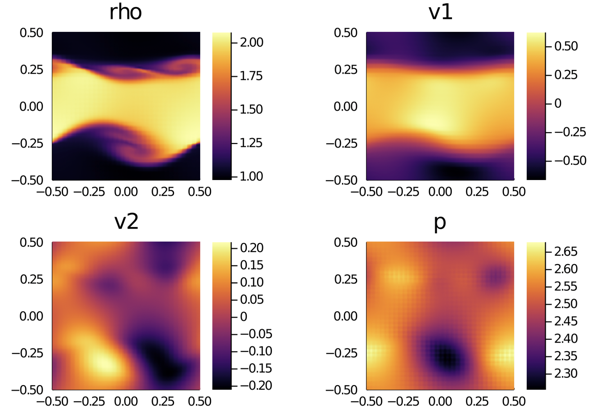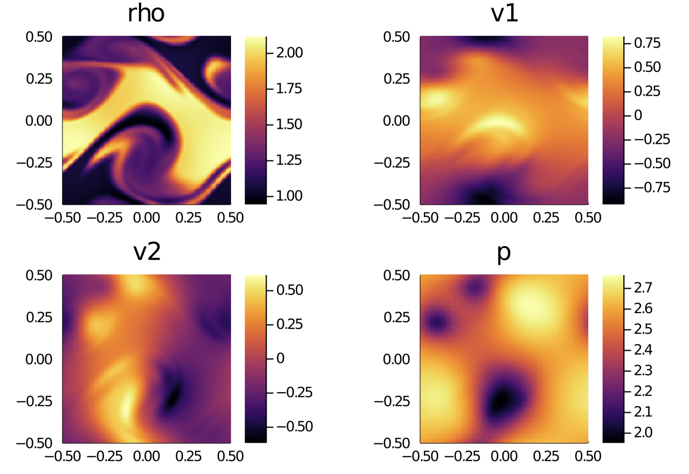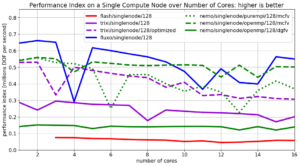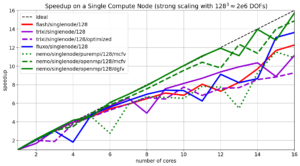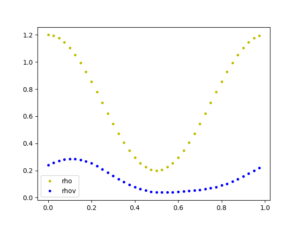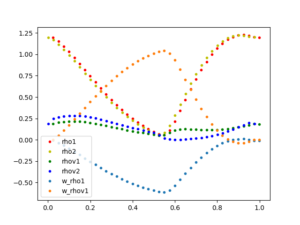Simulation of an astrophysical colliding flow [1] run by a novel Discontinuous Galerkin/Finite Volume (DGFV) blending scheme [2] which has been implemented in the FLASH code [3].

The code has following capabilities:
- fourth-order accurate ideal magneto-hydrodynamics with hyperbolic divergence cleaning [4]
- octree-based adaptive mesh refinement
- distributive computing and load balancing
- multi-species fluid dynamics (N_species > 10)
- turbulent driving
- octree-based Poisson solver for self-gravity [5]
- octree-based radiation physics [6]
- external gravitional fields
- sink particles [7]
- chemical reaction networks [8]
[1] Weis, Micheal et al. “The Virial Balance of CO-Substructures in Colliding Magnetised Flows” (in preparation)
[2] Markert, Johannes et al. “A Sub-Element Adaptive Shock Capturing Approach for Discontinuous Galerkin Methods” (submitted)
[3] Fryxell, Bruce, et al. “FLASH: An adaptive mesh hydrodynamics code for modeling astrophysical thermonuclear flashes.” The Astrophysical Journal Supplement Series 131.1 (2000): 273.
[4] Markert, Johannes et al. “Flash goes DG” (working title, in preparation)
[5] Wünsch, Richard, et al. “Tree-based solvers for adaptive mesh refinement code FLASH–I: gravity and optical depths.” Monthly Notices of the Royal Astronomical Society 475.3 (2018): 3393-3418.
[6] Wünsch, Richard et al. “Tree-based solvers for adaptive mesh refinement code FLASH – II: radiation transport module TreeRay” (submitted)
[7] Federrath, Christoph, et al. “Modeling collapse and accretion in turbulent gas clouds: implementation and comparison of sink particles in AMR and SPH.” The Astrophysical Journal 713.1 (2010): 269.
[8] Seifried, D., and S. Walch. “Modelling the chemistry of star-forming filaments–I. H2 and CO chemistry.” Monthly Notices of the Royal Astronomical Society: Letters 459.1 (2016): L11-L15.

